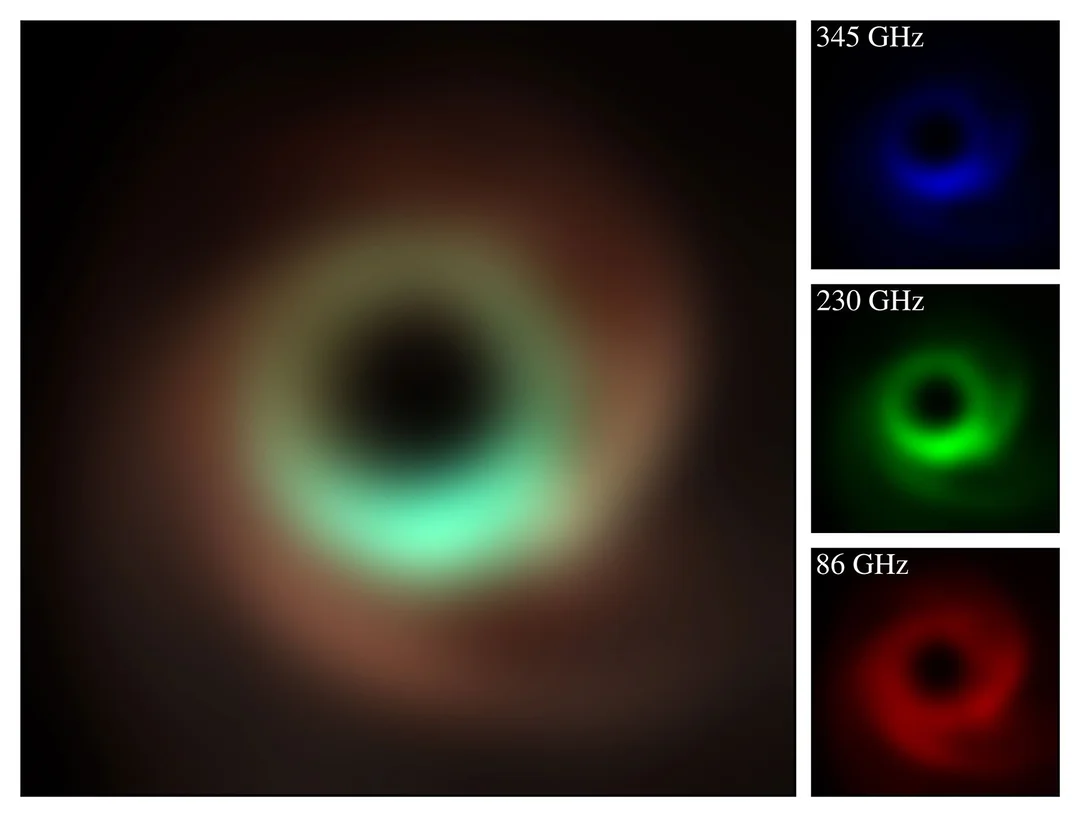
Black Hole Imaging Enters a New Era: Event Horizon Telescope Pioneers Multi-Color Vision
The quest to visualize the unseen depths of the universe has taken a giant leap forward. Scientists with the Event Horizon Telescope (EHT), renowned for capturing the first-ever image of a black hole, are now 개발ing a groundbreaking technique to observe these cosmic behemoths in multiple colors. This innovation promises to unlock unprecedented insights into the behavior and characteristics of black holes.
Black holes, by their very nature, are invisible, their immense gravity preventing even light from escaping. However, the EHT team's new approach, detailed in *The Astronomical Journal*, employs a method called frequency phase transfer (FPT). This ingenious technique allows astronomers to correct for atmospheric interference in real-time across multiple radio bands, effectively giving radio telescopes "multi-color vision."
Sara Issaoun, a researcher at the Center for Astrophysics | Harvard & Smithsonian, spearheaded the team behind this breakthrough. This advancement addresses a significant limitation in radio astronomy. Traditionally, radio telescopes could only observe one frequency band at a time. While sufficient for stationary objects, this posed a problem for imaging rapidly spinning black holes or those with relativistic jets. The fast-changing nature of these objects meant that multiple exposures taken at different frequencies couldn't be combined coherently. The FPT technique solves this by allowing simultaneous observations at multiple wavelengths, providing a clearer, more comprehensive picture.
How it Works
The FPT technique essentially tracks atmospheric distortions at one wavelength (e.g., 3mm) to sharpen the image at another (e.g., 1mm). This is akin to how optical telescopes use lasers to correct for atmospheric turbulence. 
The Future of Black Hole Imaging
While still experimental, this proof-of-concept paves the way for sharper and more accurate depictions of extreme cosmic phenomena. Next-generation observatories like the next-generation EHT (ngEHT) and the Black Hole Explorer (BHEX) are already planning to utilize this method. These projects aim to enhance the EHT's capabilities tenfold, potentially revealing elusive photon rings that could confirm black hole spin and further validate Einstein's theory of general relativity.
In 2019, the EHT Collaboration astounded the world with the first image of M87*, followed by Sagittarius A* (Sgr A*), the supermassive black hole at the center of our galaxy, in 2022. The new multi-color imaging promises to deliver even more detailed and informative visualizations of these enigmatic objects, pushing the boundaries of our understanding of the universe.
This advancement also addresses existing debates regarding the structure of these black holes. Some researchers have suggested that the accretion disk of Sgr A* might be more elongated than ring-like. These new observation techniques may finally settle these question and provide clear insight into the characteristics of these magnificent black holes.
What new mysteries will these multi-colored images of black holes unlock? Share your thoughts and predictions in the comments below!